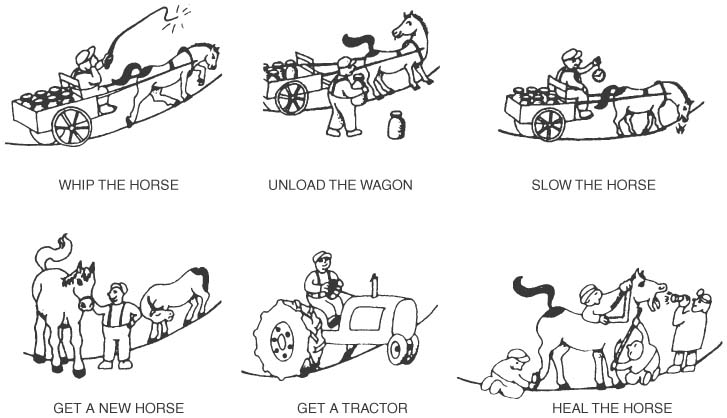 |
 |
Figure 50-47
View of the failing heart as a sick, tired horse pulling
a wagon up a steep hill. Although application of a whip (inotropes) encourages the
horse to move faster, such treatment can kill the animal. Unloading the wagon (vasodilators)
would seem to be advantageous, but in heart failure, this approach can harm the horse
by activating harmful neurohumoral responses. Slowing the horse (β-adrenergic
blockers) while delaying the journey can be beneficial, especially if this also helps
heal the horse. Replacing the horse (cardiac transplantation) is useful as long
as enough spare horses are available, and getting a tractor is a solution only if
reliable machines are available. The ideal solution, of course, is to learn what
ails the animal and to use this information to heal the horse. (From Silber
EN, Katz LN: Therapeutic strategies for managing heart failure. In
Katz AM [ed]: Heart Failure: Pathophysiology, Molecular Biology and Clinical Management.
Philadelphia, Lippincott Williams & Wilkins, 2000, pp 309–339.)

 |
